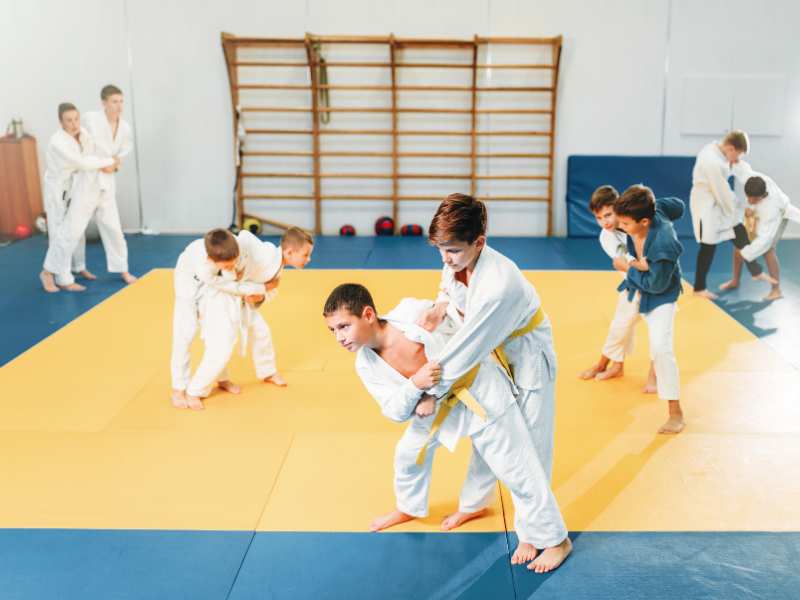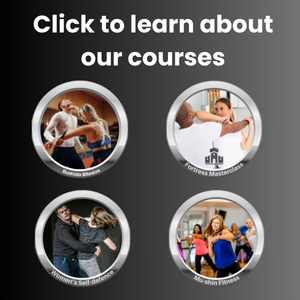What inspired you to create the WarriorUp course?
A combination of factors inspired me to create the WarriorUp course. The tragic murders of two young women, Sarah Everard in 2021 and Zara Aleena in 2022, deeply affected me. Zara lived just around the corner from me, bringing the reality of such violence painfully close to home. Around the same time, I had just welcomed a daughter into the world, which heightened my sense of urgency to do something to prevent such tragedies from occurring again. Zara’s killer had 28 previous convictions, highlighting the inadequacies of the current system in protecting us, particularly women.
Additionally, a conversation with my wife’s best friend was pivotal. She shared an experience of being attacked while at university. Fortunately, her physical strength and height—she is 5ft 10—deterred her attacker, but it struck me that despite having trained in martial arts for over four years and recently completing a self-defence course, her training didn’t come into play during the attack. This realisation underscored the need for a self-defence system that includes mental training to ensure individuals can effectively respond in moments of extreme fear.
Start young, remember forever
Judo was my first port of call at eight since it was a short walk from my house. It was a great first choice, and unknowingly, it was about to teach me my greatest lesson in muscle memory. Most of us are familiar with judo thanks to being the first martial art to feature in the Olympics. Unfortunately, my training in judo was limited to two years as the local club folded. However, forty years later, I remember most of the throws, even the names, and tai otoshi (body drop) is still my favourite.
The reason these techniques have stuck with me is two-fold: firstly, my age. A child’s brain is developing at the fastest rate. By the time we reach five years old, the brain is 90% of its adult weight, which is incredible compared to our body’s development by that age. We are ripe to learn and absorb things far more efficiently when we are young.
Secondly, the judo club limited what we learned. I remained a yellow belt (first coloured belt) for those two years. Most of the younger students did. It allowed us to participate in more competitions, and almost every weekend, you could enter a competition, providing you were yellow belt and below.
We drilled the same techniques repeatedly during training, much like a boxer focusing on jab, cross, hook, and uppercut. This was crucial to building instinctive reactions and a high degree of proficiency. In fact, in my early twenties, I recall a fight kicking off in the middle of a dance floor, and bouncers waded in. One grabbed me from behind, and I instinctively dropped into O-goshi (major hip throw), though fortunately, I had the sense to pull my hip and roll him off the side when I realised it was a bouncer. He just looked at me knowingly and told me to leave.
Meeting the masters
By my twenties, I had trained in ju-jitsu and karate, gaining a 2nd-degree black belt in the latter, but that wasn’t my instinctive go-to at that moment. The situation dictated my response, and being grabbed closely meant my instinctive reaction was to lower my centre below my attacker’s and look to flip him.
My martial arts journey took me to many countries and styles, particularly Japan, where I continued to practice karate and began Aikido for seven years. Upon arriving in Japan, I expected to learn all kinds of ‘secret and sophisticated’ moves. Instead, I was demoted back to a white belt in karate and introduced to kaizen to regain my grade.
Kaizen is the Japanese philosophy of continuous improvement, often centred around the notion that ‘the tiniest of improvements add up to big things.’ In karate, this meant no fancy flying kicks. Instead, we were to break our techniques down to the tiniest components, working religiously to improve each one. The full execution of the technique became extraordinarily efficient and, therefore, fast and powerful, leveraging full body weight and kinetic energy (energy of motion).
I witnessed the full potential of this philosophy a week before a major international competition at the Japanese Karate Association (JKA) Hombu Dojo headquarters. The young men and women (many university students) trained at least five times a week for 3-4 hours a day, holding 3rd or 4th-degree black belts. They were formidable in sparring- scarily good. It was embarrassing sparring with them.
However, the week before the competition, the instructors’ ‘blooded’ them, which meant they took their ‘brakes’ off during sparring. It was a sight to see, and I remember likening it to fictional scenes like Mike Tyson boxing his towel boy or a tiger going full throttle with one of its cubs.
Superhuman skill
The instructors were at different levels with the students who could not land a single punch or kick, and worst of all, the instructors weren’t even breaking a sweat! The difference was experience and time devoted to kaizen, as some of the instructors had been ironing the knots out of their skills for 50 years, pretty much every day without fail.
The same applied in Aikido: When the instructors demonstrated a technique on you, it was scary because they were a millimetre away from breaking your arm and probably only used about 10% of their strength in the technique. I was awe-struck by their abilities, and I didn’t see a single flying kick!
The lesson was simple: A high degree of technical proficiency and instinctive reaction would make one un-bullyable. To achieve this, one needed to train every day or choose a fighting system with limited moves to focus on quality over quantity and give the cerebral cortex (the part of the brain that controls memory) a real chance of making the skills instinctive.
The longer term damage of bullying
Bullying is, of course, a lot more different today; it’s more likely to be a group activity, and of course, the internet has opened up new avenues of attacking and harassing people. It’s sad, especially considering the impact on mental wellbeing and development.
Victims of bullying are at a higher risk of developing various mental health disorders, including depression and anxiety. It lowers self-esteem and self-worth, which can impact life chances. It causes isolation and loneliness, which may be the cause of increased suicide rates in adolescents. There is even evidence that it lowers academic performance and increases the risk of substance abuse.
When you consider the potential impact bullying has on a young person’s development and life chances, it’s clear they need more support.
Fortunately, I managed to channel my fear into action, but my memory of this event at eight years old may be skewed. Did the incident with the 5 Claires motivate me to take action and join a judo club? Or, was it that, at the time, a few of my mates had just joined, and I went along to follow? In truth, the key to starting my journey was the easy access to judo, followed by ju-jitsu and karate. My motivation to continue came from the students who were better and the feeling I got when I received the next coloured belt.
I recommend that those experiencing bullying or feeling threatened take up a martial art or combat sport. If you don’t have the desire or commitment for this, we have created several programmes designed to teach these skills quickly and hardwire them into your muscle memory.
Our FREE 3-minute, 3-day challenge below will introduce you to a revolutionary way to quickly develop a highly effective self-defence skill, and show you how to make it instinctive for life!





0 Comments